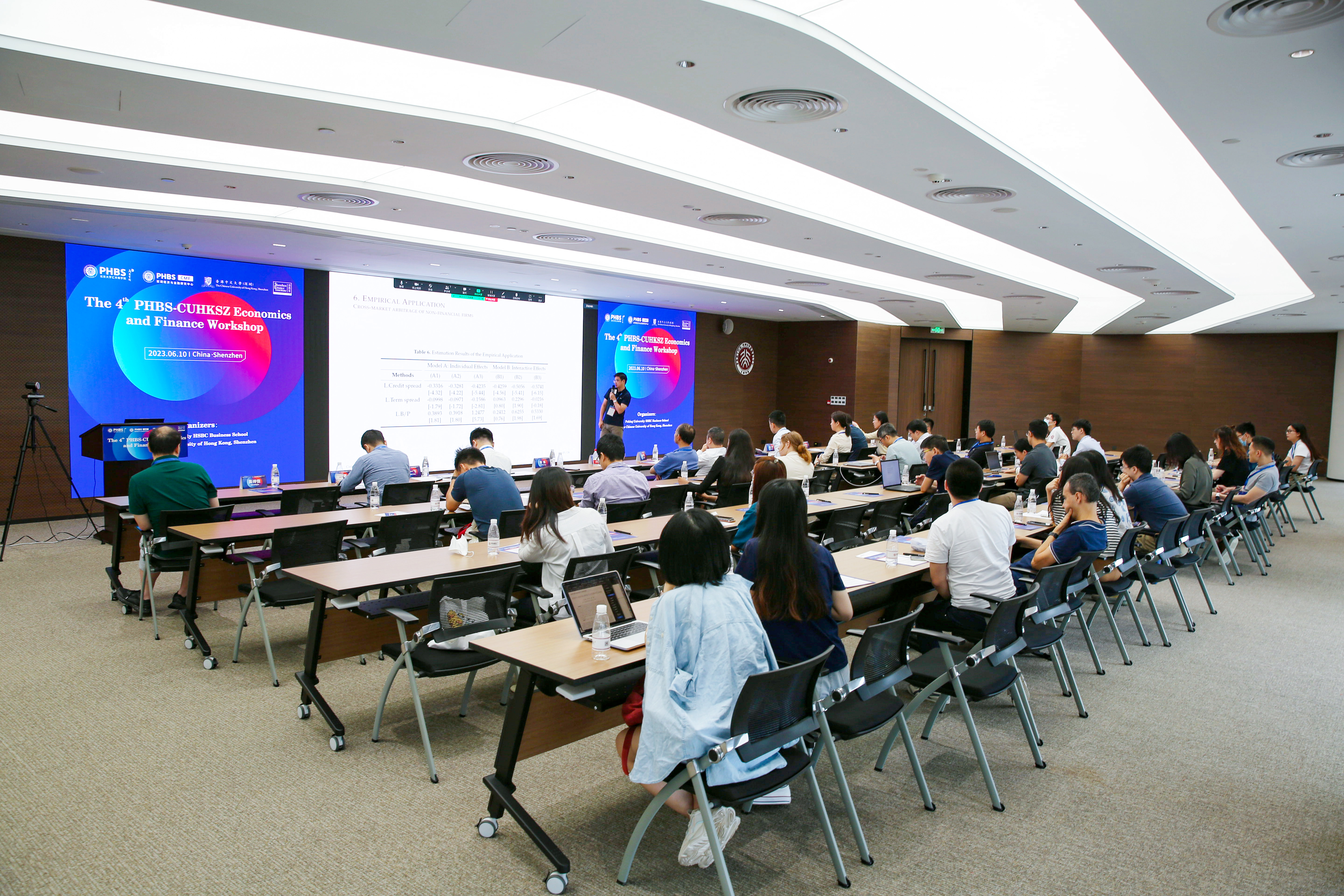Sponsored by Peking University HSBC Business School (PHBS), the Sargent Institute of Quantitative Economics and Finance (SIQEF) at PHBS and the Center for Macroeconomy and Finance (CMF) of Peking University organized the Sixth International Workshop in Macroeconomics and Finance on June 16-17.

The group photo of participants

Attendees listen to the presentation
The workshop invited renowned scholars and experts from prestigious universities and institutions worldwide, including Columbia University, Boston University, University of Pennsylvania, University College London, Peking University, Hong Kong University, Hong Kong University of Science and Technology, and University of International Business and Economics. They converged to exchange research insights and explore cutting-edge research areas with young researchers from home and abroad.
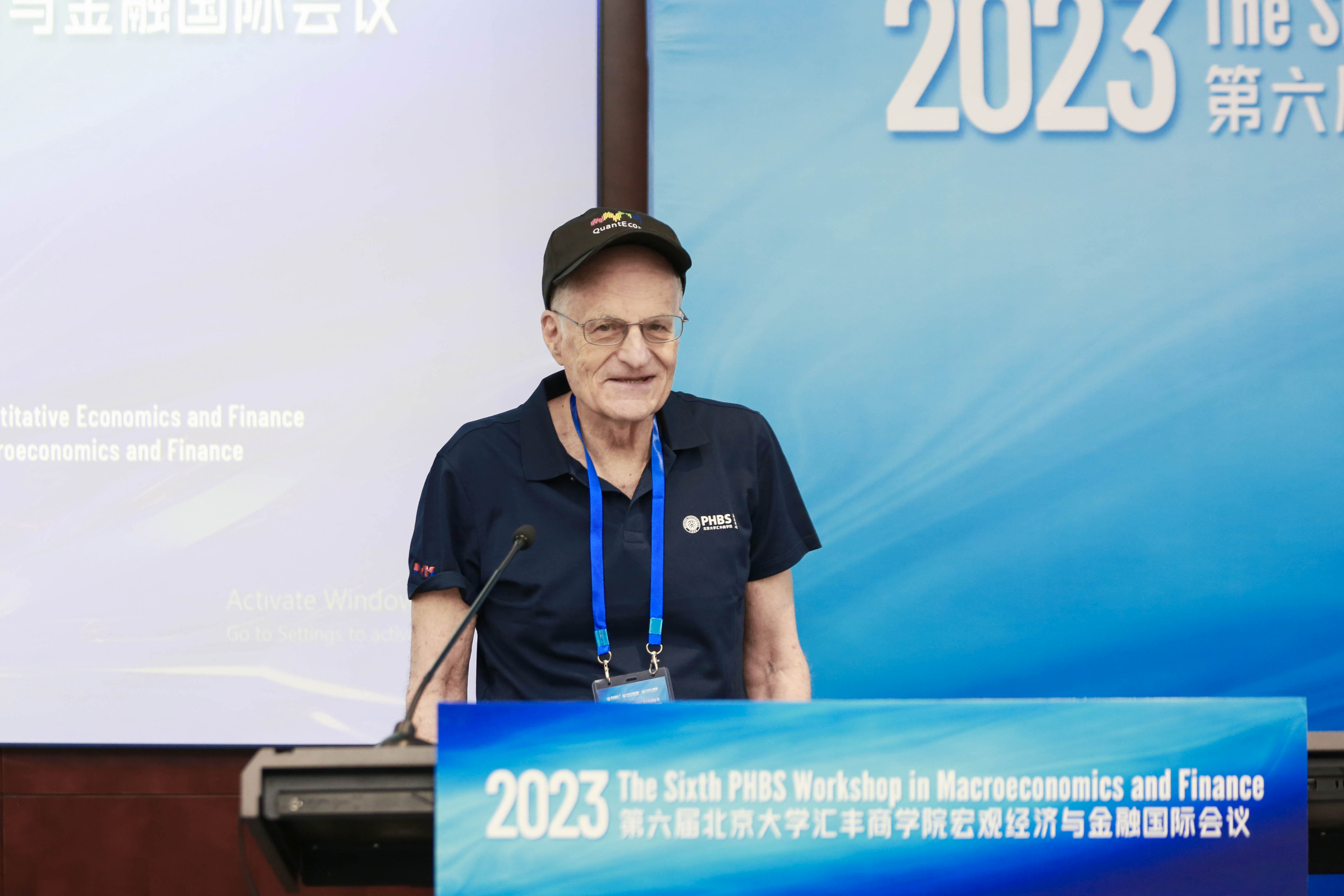
Professor Thomas J. Sargent
Professor Thomas J. Sargent, 2011 Nobel laureate in economics, SIQEF honorary director, and senior consultant, delivered the opening remarks. He noted that he would like to participate in this workshop with the mentality of a student, listening to the latest academic insights from the scholars who would present and discuss their papers.
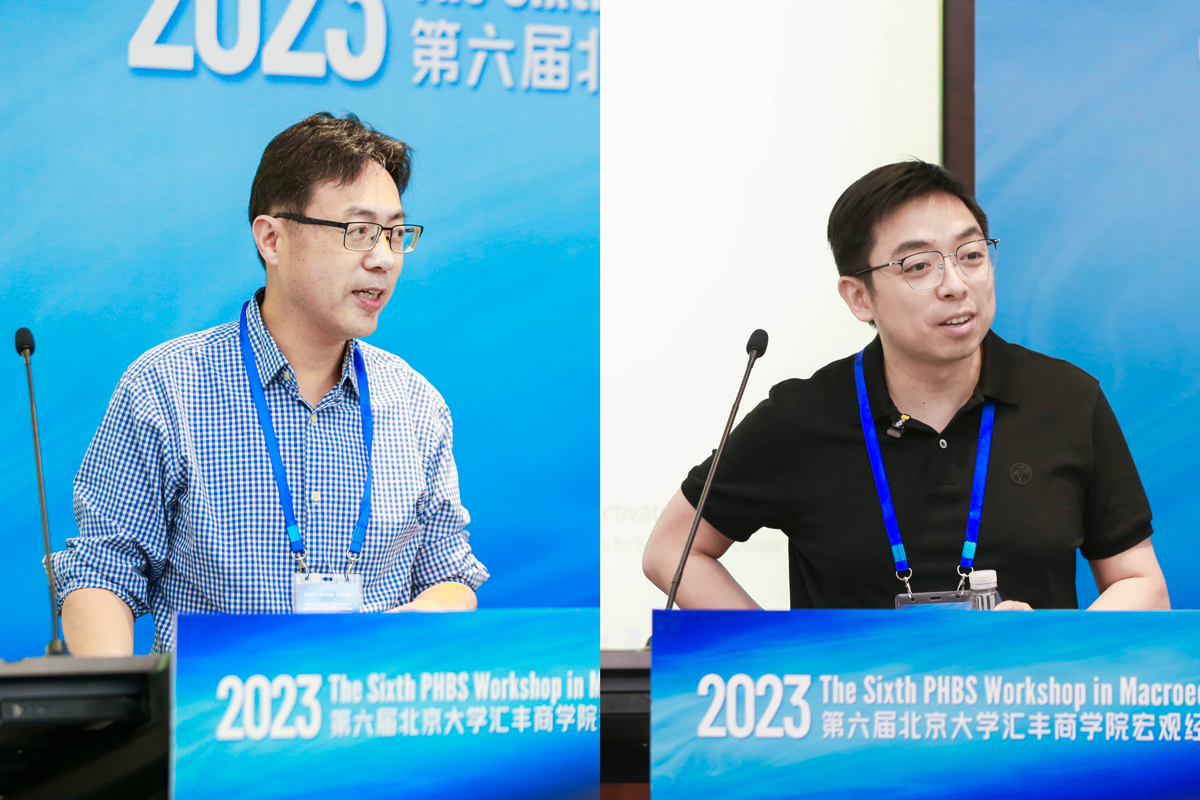
From left to right: Miao Jianjun and Xu Zhiwei
Professor Miao Jianjun from Boston University introduced his paper
"Fiscal and Monetary Policy Interactions in a Model with Low Interest Rates". This paper presents a dynamic new Keynesian model that incorporates credit constraints and uninsurable idiosyncratic investment risk faced by entrepreneurs. The study explores the implications of low interest rates and high public debt and examines the coordination of monetary and fiscal policies needed to maintain nominal anchor and price stability. The authors find that multiple steady states with positive public debt values can be sustained, and the steady-state interest rates are lower than the economic growth rate. The paper also analyzes determinacy regions of policy parameter space and identifies various policy combinations that can achieve debt and inflation stability. The findings have implications for the challenges faced by policymakers and researchers in the context of low interest rates and high public debt. PHBS Associate Professor Xu Zhiwei discussed this paper. He made comments on the necessity of bubbles to generate sustainable debt deficit under low interest rate and provided alterative story about a two-country economy with capital flows.

From left to right: Wang Neng and Huang Ji
Chair Professor Wang Neng from Columbia University presented his paper A P Theory of Government Debt and Taxes. The article presents a theoretical framework for understanding government debt and taxes, building on the work of Barro (1979). The authors introduce a concept called marginal p, which represents the cost of servicing government debt, and discuss the factors that determine the optimal debt-GDP ratio. They incorporate features such as options for default, risk management policies, and government impatience. The model demonstrates that the debt-GDP ratio is influenced not only by the primary deficit, interest payments, and GDP growth but also by hedging costs. The authors calibrate the model and provide quantitative statements about the dynamics of the debt-GDP ratio and the time it would take for the US to reach its debt capacity. Assistant Professor Huang Ji from Chinese University of Hong Kong discussed this paper. He provided comments on the link between sovereign default model and the p theory paper. He also listed some key ingredients for this paper, including large open economy sovereign default, and domestic cost of default.
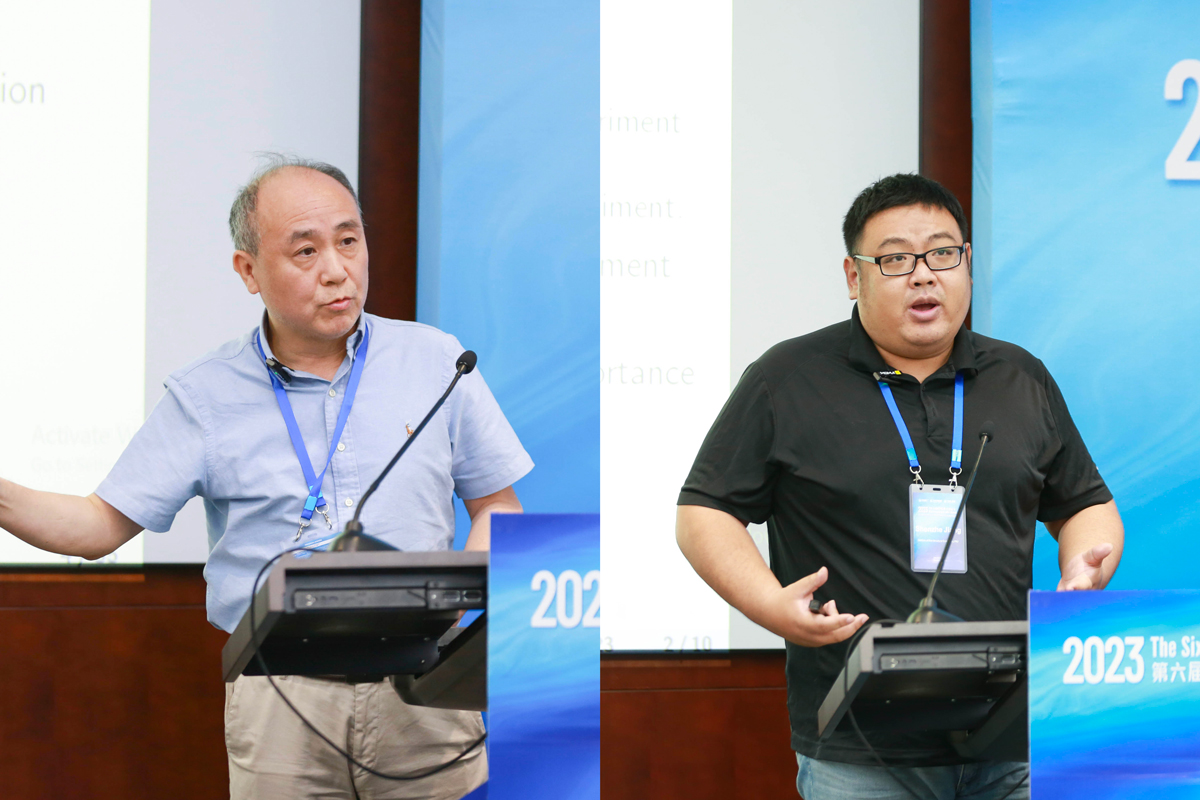
From Left to right: Zhu Xiaodong and Jiang Shenzhe
Professor Zhu Xiaodong from the University of Hong Kong presented the paper ‘Bottom-up Institutional Change and Growth: Theory and Evidence from China.’ Professor Zhu gave the introduction of China's institutional changes, mainly about the 1978 to 1984 agricultural reform, which is also an important driving force for China's agricultural productivity improvement. In this paper, a bottom-up institutional change model is established. In the preliminary numerical analysis, the author generates the bottom-up institutional change that will spill over between regions, and successfully predicts the regional growth path that is consistent with China's growth. In addition, the author also introduces some ongoing research at the end. Jiang Shenzhe, assistant professor at the Institute of New Structural Economics at Peking University, commented on the empirical and theoretical modelling of the paper and suggested that there might be more extensions behind China's institutional changes, such as considering “crossing the river by touching the stones.”
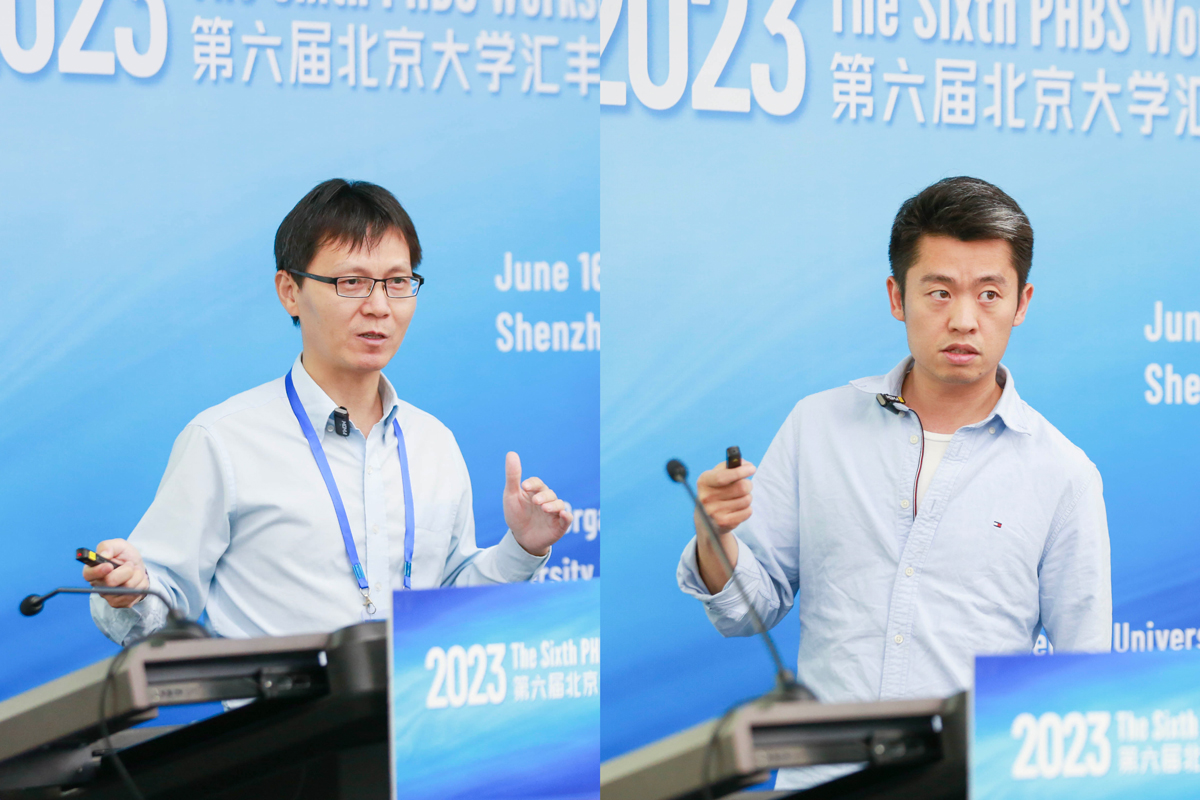
From Left to right: Liu Xuewen and Zhao Bo
Professor Liu Xuewen from the University of Hong Kong introduced the paper "Consumption-led Industrial Upgrading". The purpose of the paper is to understand development and industrial upgrading in a catching-up economy, the corresponding optimal development policies, as well as the implications for the world. This paper emphasizes that for a catching-up economy, production externality and spillover largely occur in the consumption goods sector. This paper provides a formal model of consumption-induced market sizes and demand-driven technology progress in a standard growth framework. In particular, the model has implications for optimal development policies. The right policy affects not only the growth in the transitional path but also the long-run growth in the steady state. Associate Professor Zhao Bo from the Institute of National Development of Peking University summarized the paper’s modification, sorted out its contribution, and finally put forward some suggestions for modification in the setting of utility function.
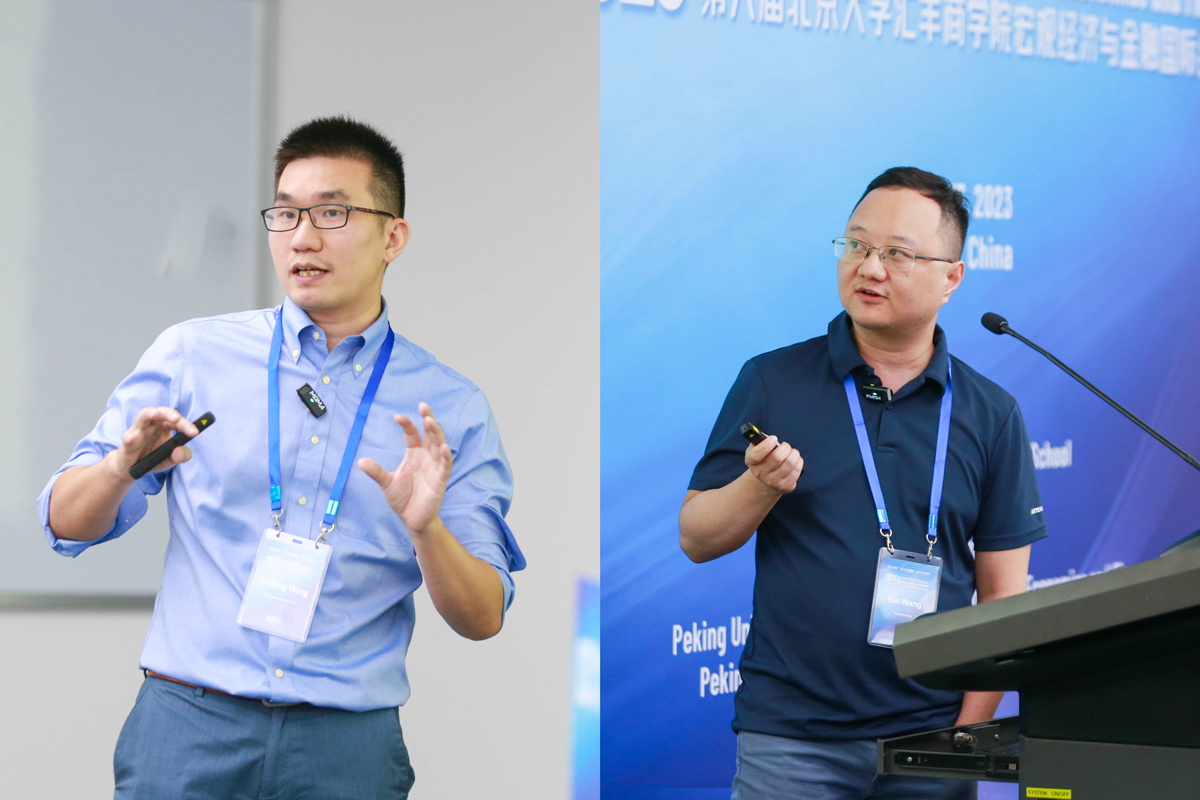
From left to right: Wang Yicheng and Wang Bin
PHBS Assistant Professor Wang Yicheng introduced the paper "Foreign price shocks, production networks, and monetary policy". This paper mainly studies: How to design monetary policy in real open economies with intersectoral input-output linkages? This paper establishes a framework involving SoE, multi-sector production function network to study how to formulate monetary policy to minimize distortions, using inflation index and DC (Divine coincidence) index as monetary policy targets. Professor Wang introduced the mechanism of the DC index in detail and explained the economic intuition of the index with examples. It is found that the direct or indirect use of domestic factors by a department greatly affects its weight in the DC index, and the more labor-intensive departments and departments with higher price stickiness are given more weight in the DC index. The study found that using the DC index as a monetary policy target increases welfare compared to the traditional Domar index. Associate Professor Wang Bin from Jinan University suggested the possible expansion of the research areas: for example, dynamic exchange rate issues, energy or food sectors, supply chain disturbances, etc.
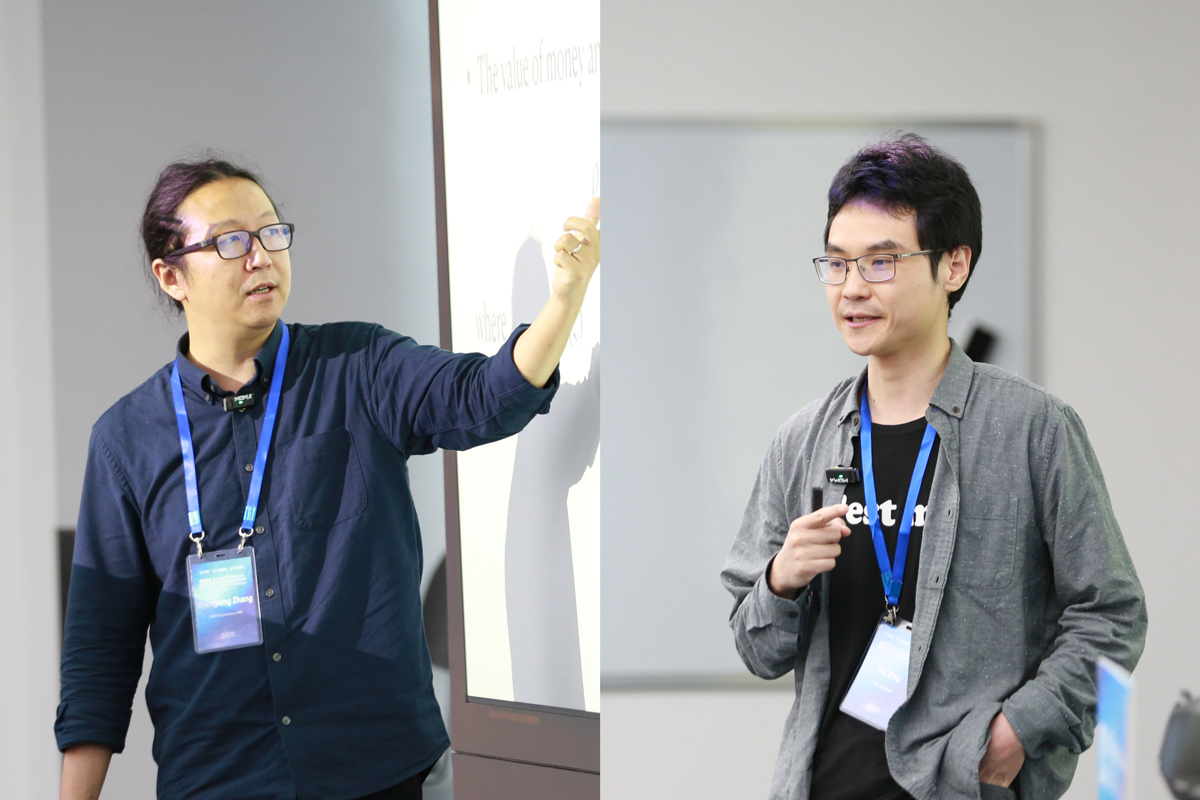
From left to right: Zhang Shengxing and Zhu Yu
Zhang Shengxing, visiting associate professor at PHBS, introduced the paper “Valuing Platforms and Tokens: a Q-theory with Search and Matching.” This paper develops a dynamic model to value a token platform, where trading between buyers and sellers is subject to search and matching frictions and transactions use the platform-issued token as a medium of exchange. The value of the token platform and token issuance policy depends on the extensive margin and intensive margin of trade. After the presentation, Zhu Yu, associate professor at Renmin University gave comments on why platform issued the token and the issuance of CBDC.
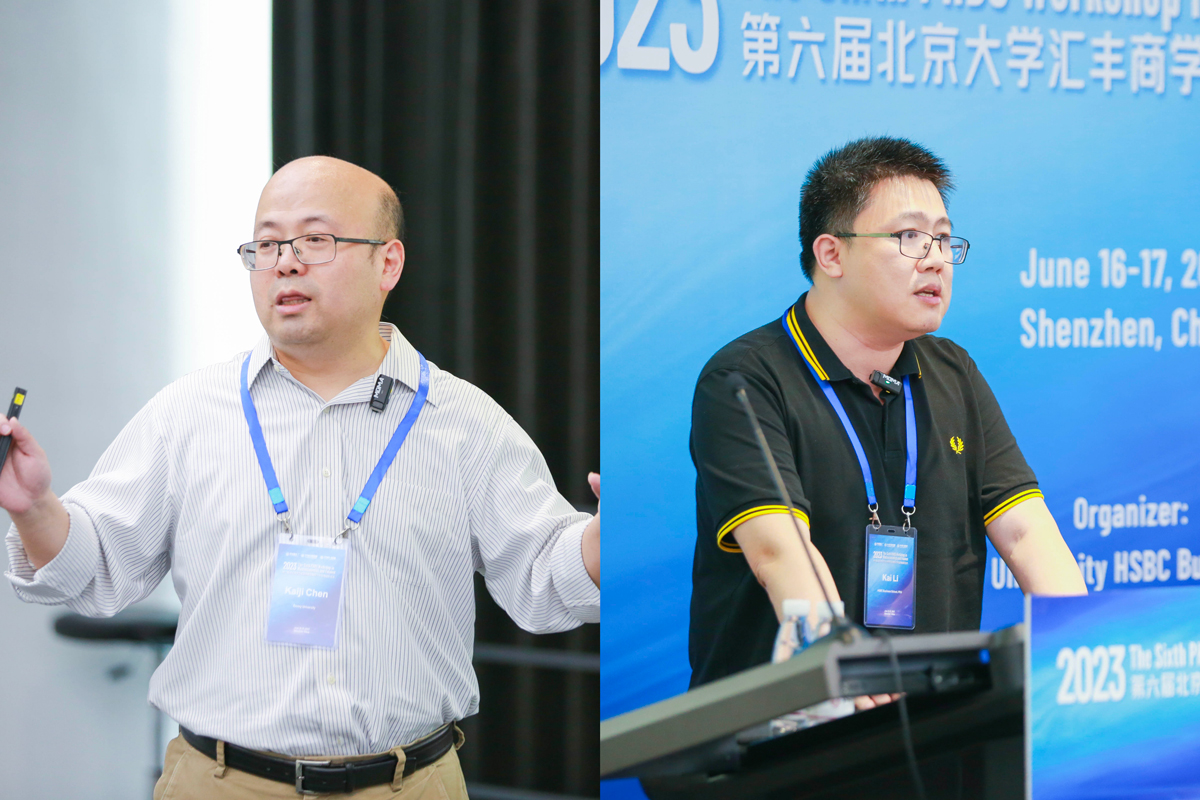
From left to right: Chen Kaiji and Li Kai
Chen Kaiji, associate professor of Economics at Emory University, introduced the paper “Monetary Policy Transmission under Financial Repression.” This paper proposes a banking model with deposit rate ceilings, which shows the enhancing effect of wholesale funding on monetary policy transmission, opposite to the conventional view. PHBS Associate professor Li Kai, gave comments on confounding effects in empirical specifications and suggested to endogenote interbank wholesale funding market.
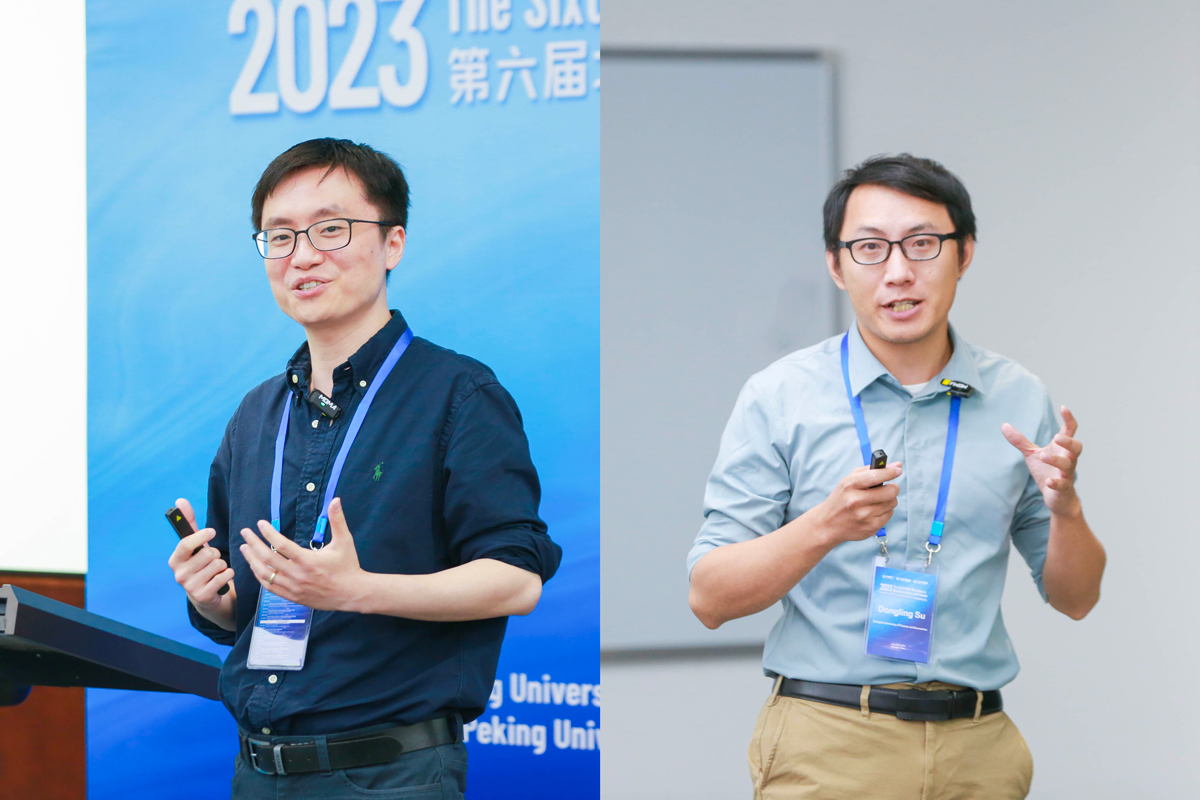
From left to right: Wei Cui and Su Dongling
Wei Cui, associate professor from University College London, introduces the paper A Ramsey Theory of Financial Distortions. Response to the puzzle about government optimal tax and low government bond return, professor Cui proposes a Ramsey model with financial friction and shows that it is optimal to tax capital if financial binds and government indebtedness is high. Su Dongling, assistant professor at Shanghai University of Finance and Economics gave comments on the robustness on capital supply, the presence of asset bubbles, and time consistency of government policy.
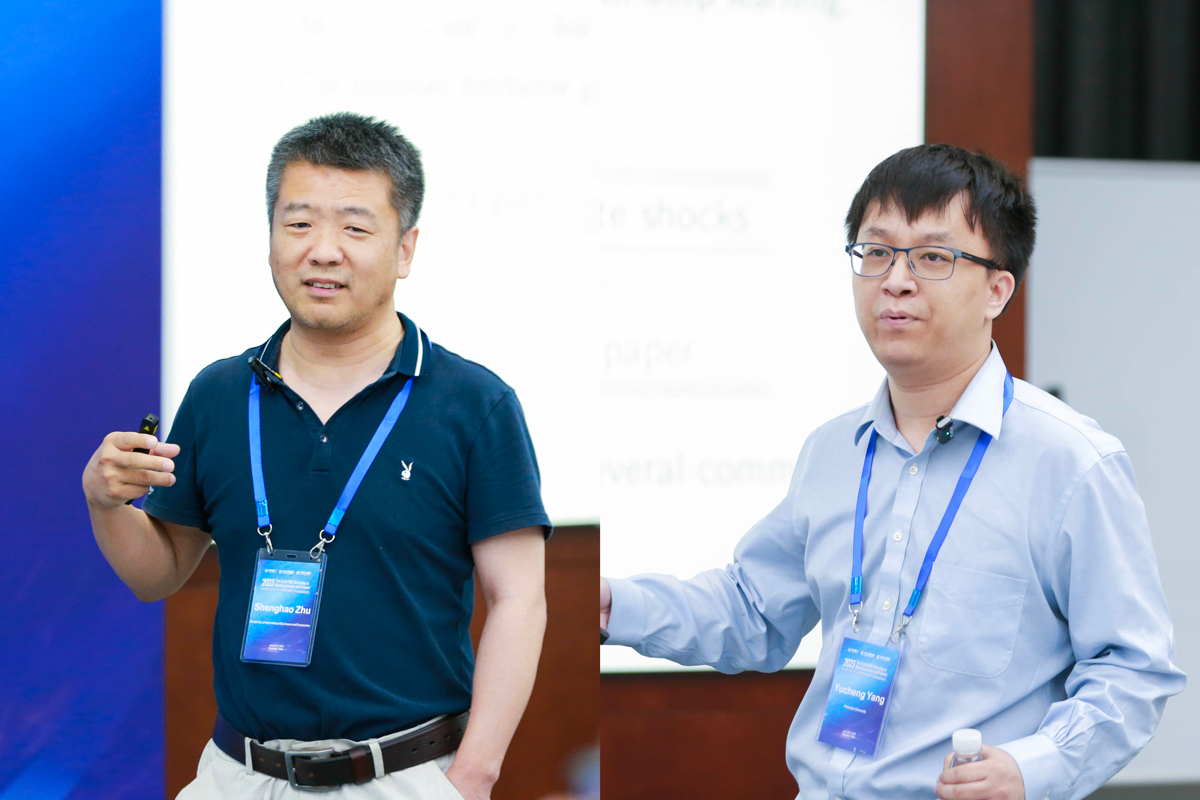
From left to right: Zhu Shenghao and Yang Yucheng
Professor Zhu Shenghao from the University of International Business and Economics introduced the paper "Optimal Nonlinear Taxes in an Economy with Aggregate Shocks". The main research question of this article is: what is the optimal nonlinear tax schedule in a heterogeneous agent economy with aggregate shocks, and what kind of algorithm should we use to find this optimal tax scheme. In order to study this problem, the authors used a variational approach to investigate the optimal nonlinear tax schedule. They established a recursive dynamic game model with the heterogeneous agent to theoretically study this problem, and finally attempted to use machine learning to solve the model. The paper has aroused the interest of many scholars and has generated heated discussions. Dr. Yang Yucheng from Princeton University commented on the use of variational methods and machine learning in the topic of optimal nonlinear taxes, and expanded the future application prospects of the model.

From left to right: Ai Hengjie and Fang Xiang
Professor Ai Hengjie from the University of Wisconsin introduced his latest paper "Identifying Preference for Early Resolution (PER) from Asset Price". The background of this article is that PER is used in multiple leading asset pricing models, such as long-run risk model and robust control, but the empirical evidence between PER and asset prices is not clear. Professor Ai attempted to confirm the existence of PER preference using a theoretical model of a thought experiment, as well as empirical research on the relationship between the US FOMC announcements and asset prices. The results strongly support the PER hypothesis. Fang Xiang, assistant professor from the University of Hong Kong, discussed topics such as using more heterogeneous assumptions in the model.

From left to right: Winston Dou and Luo Ye
Winston Dou, assistant professor at University of Pennsylvania, presented his paper “AI-Powered Trading, Algorithmic Collusion, and Price Efficiency”. AI trading, the combination of algorithmic trading and reinforcement learning, plays a significant part in capital markets. Professor Dou and his coauthors adopt a model of imperfect competition among informed traders with asymmetric information to investigate how AI-powered informed investors trade differently from humans. They find that AI trading profitability tends to be above the non-collusive level. When the pricing rule of market makers is dogmatic, collusion by price trigger punishment is pronounced when information asymmetry is not severe. When the pricing rule of market makers is adaptive, collusion by biased learning is the domination force. Consequently, in a market with prevalent AI-powered trading and collusion through punishment threat, perfect price efficiency remains unattainable. Luo Ye, associate professor at the University of Hong Kong, gave some comments on the limitation of algorithmic design.
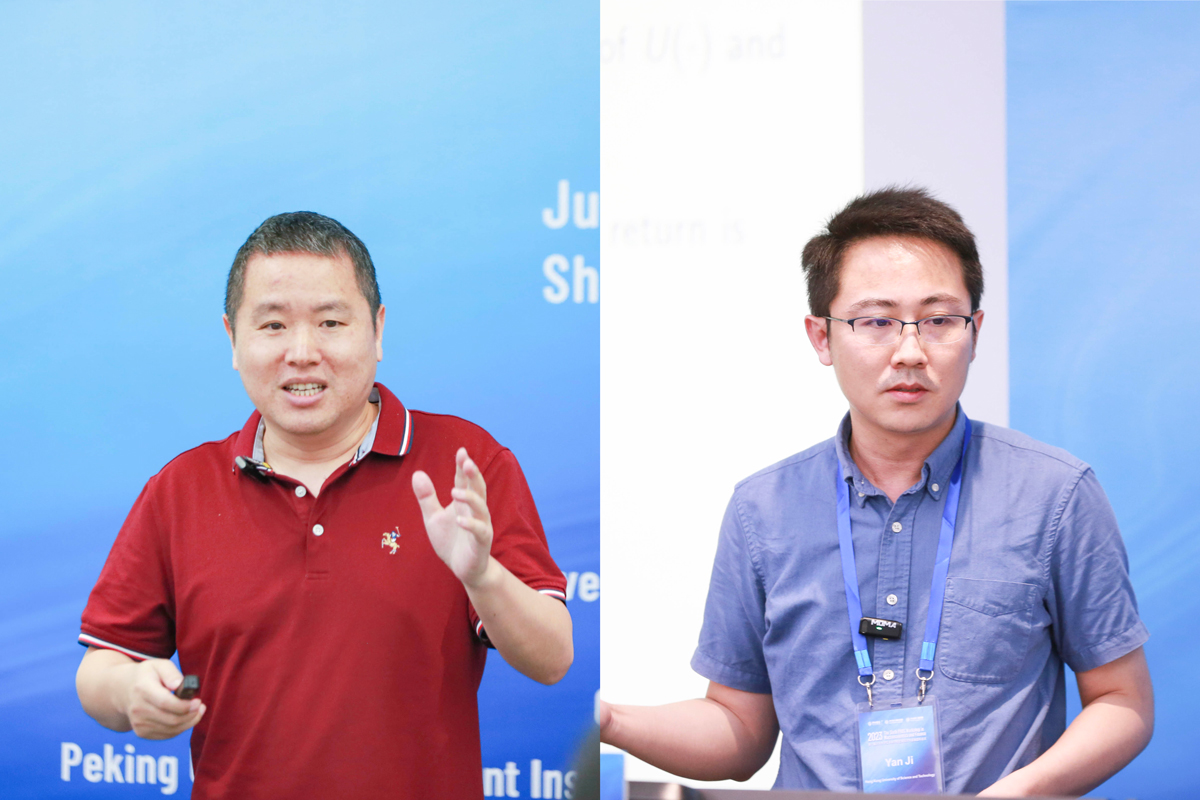
From left to right: Wang Pengfei and Ji Yan
Professor Wang Pengfei, vice chancellor of Peking University Shenzhen Graduate School and PHBS dean, presented his research “Reference-dependent Preferences and Sentiments”. Large fluctuations are always witnessed in the asset prices. Reference dependence has been a core topic in behavioral economics. Professor Wang and his coauthors link Reference-Dependent Preference with Keynes-Shiller’s notation of sentiments by using an overlapping generation model with borrowing constraint. They found that sunspot equilibria exist if the agents have Reference-Dependent Preferences. There is an excessive co-movement between asset prices. Sentiment-driven fluctuations are symmetric, which is more likely when economy is in a recession. Ji Yan, associate professor at Hong Kong University of Science and Technology, gave some comments on economic intuitions of results and generation of sunspot equilibrium.
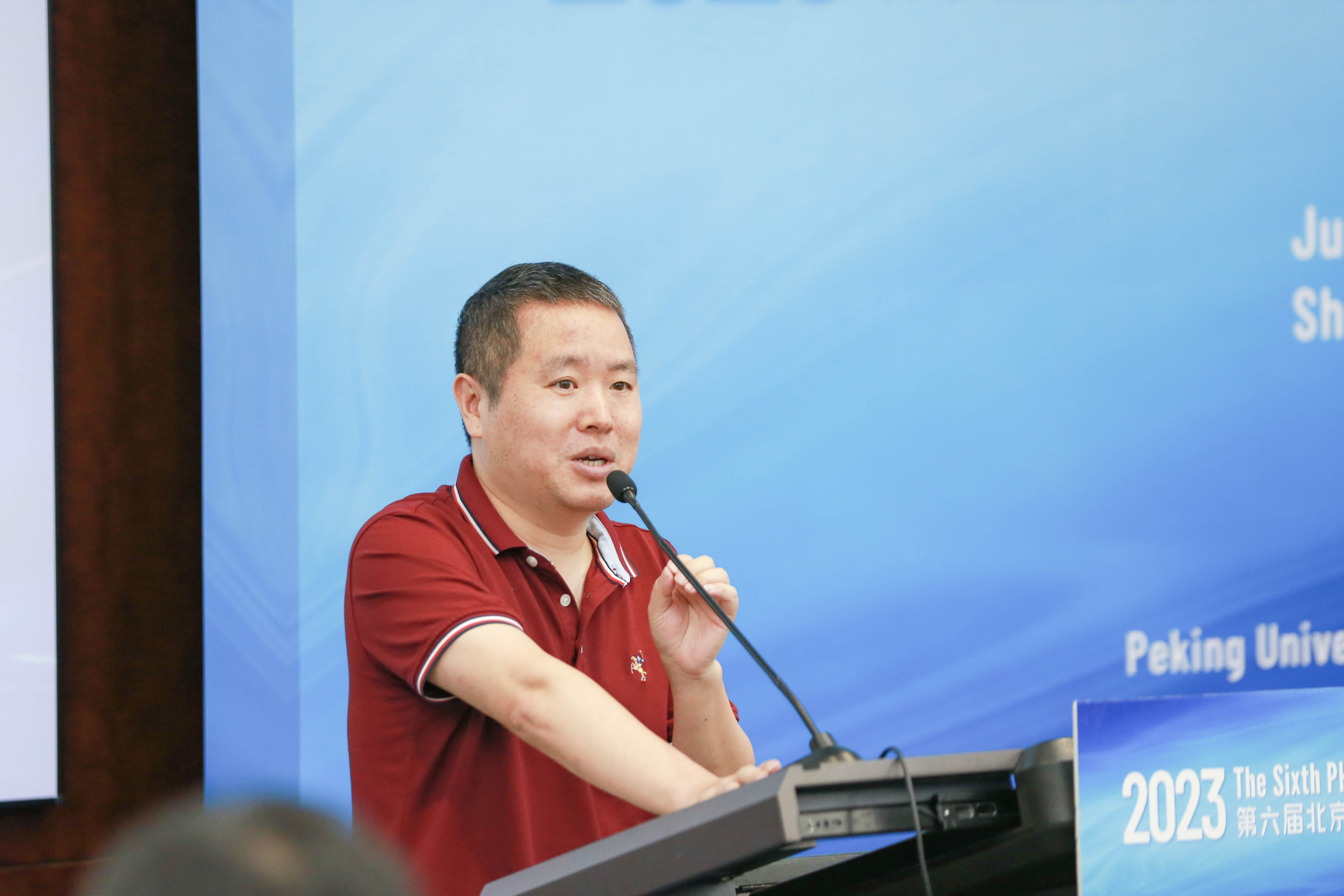
Professor Wang Pengfei delivers the remarks
In the closing remarks, Professor Wang Pengfei expressed his heartfelt appreciation for the scholars who delivered excellent presentations and engaged in lively discussions and his gratitude to Professor Sargent for his support in the workshop. Professor Wang also introduced the recent development of the PHBS MA-PhD program: the school admitted around 300 outstanding students from prestigious universities worldwide each year. Among the 2023 master’s graduates, many have chosen to pursue doctoral degrees at overseas universities, including the University of Toronto, Harvard University, and Princeton University; moreover, the school’s Ph.D. program also yielded impressive results. As the first batch of students trained after the establishment of the Sargent Institute of Quantitative Economics and Finance, the 2023 doctoral graduates will continue academic research at prestigious universities such as Sun Yat-sen University, Jinan University, and Macau University of Science and Technology.
Initiated in 2018, PHBS Workshop in Macroeconomics and Finance has provided an effective platform for some of the most prominent scholars and young researchers to promote academic exchanges among macroeconomic and financial research institutions, deepen the understanding of China's macroeconomic and financial issues, and facilitate the application of research findings into China’s reform and development.
By Zhang Wenrui, Liu Qiaoqiao, Liu Yifu, Hu Die, Ren Hangdong, and Annie Jin
Source: Research Office and PR & Media Office






















